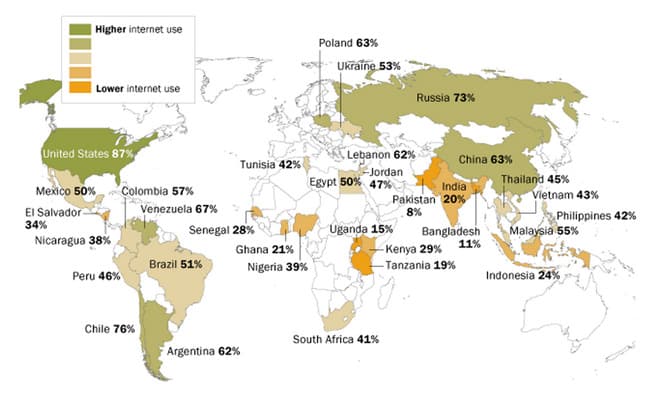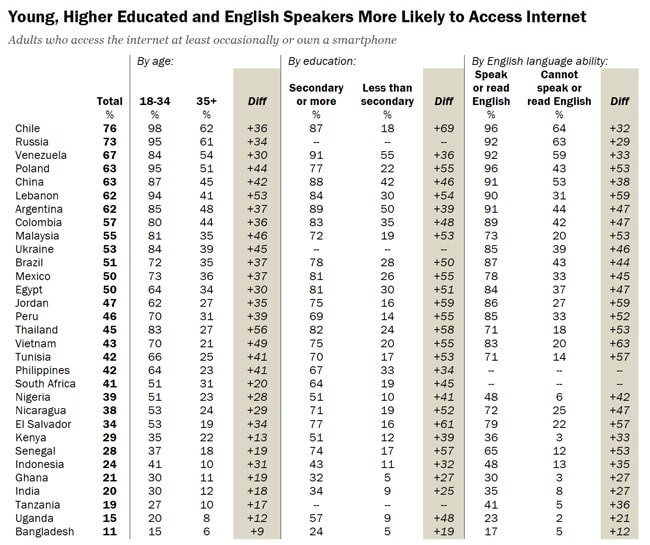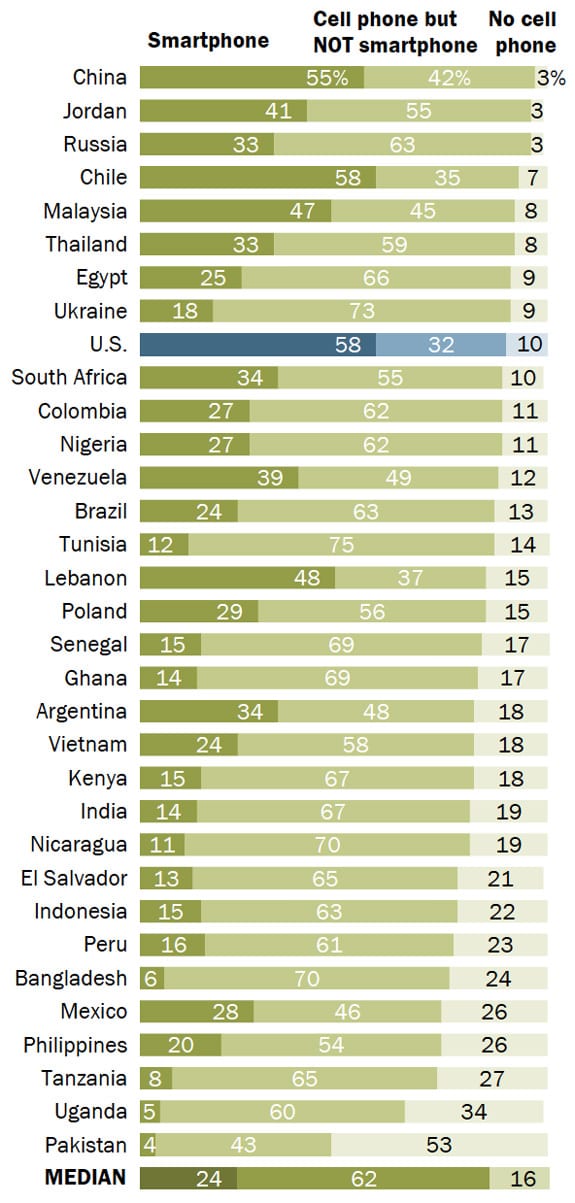Where the devices are: New study updates global stats on Internet usage
People in developing and emerging economies who are young and educated are much more likely to be Internet users. Ditto for those who speak a little English: regardless of age or education, they are more likely to be regular web surfers.
These are some of the findings of the Pew Research Center’s 2014 Global Attitudes study. The study updates a similar effort from 2013, which highlighted the strong levels of web usage and engagement for social and mobile users. The findings for the 2014 edition are drawn from in-person interviews with 36,619 people across 32 emerging and developing countries conducted from March 17 to June 5, 2014. The results for those 32 countries - including significant education markets such as China, India, Nigeria, Indonesia, Thailand, Vietnam, Brazil, and Mexico - have been benchmarked against a related Pew Center telephone survey of 1,002 Americans, also conducted in 2014.
The study’s high-level findings provide a compact overview of Internet access in developing and emerging economies, along with important insights as to how people access and use the Internet in each country.
For example, the following graphic illustrates the percentage of the population in each country who access the Internet at least occasionally or own a smartphone (as smartphone users, practically speaking, are also Internet users).


“A study of millennials [that is, those born between 1980 and 2000] states that 95% of respondents say friends are their most credible source for information when making a purchase. Additionally, 98% are more likely to engage with posts by friends about a brand versus a post by the brand itself. Therefore, an effective method to get millennials loyal to your brand is to get other millennials talking online.”
Following on from the importance of this highly socialised exchange, Pew also finds that searching for more practical news and information is the next major category of Internet usage in developing and emerging economies. “For Internet users in emerging and developing nations, social relationships are a fundamental aspect of their interaction with the virtual world,” says the study. “Getting various types of information, such as political news, health information and government services, is the next tier of Internet use.”
What’s in your pocket?
The Pew report also has some important observations in terms of how users in developing and emerging economies access the Internet. It tracks usage and ownership of desktop computers from country to country but also smartphone and cell phone penetration as well.
The report notes, “Overall, a median of 38% across the 32 nations surveyed say they have a working computer in their household. In 11 countries, half or more own computers, including 78% in Russia – comparable to the 80% of Americans who say they have a computer in their household. Computer ownership is relatively high in a number of Latin American nations. Majorities in Chile (72%), Venezuela (61%), Argentina (58%) and Brazil (55%) have computers in their homes. Computer ownership rates are lowest in sub-Saharan African nations.”
The extent to which users in each country have reliable access to computers outside the home (e.g., at school or at work) is less clear. Leaving this aspect aside for a moment, we can see that computer ownership broadly correlates to national income levels and explains at least part of the relationship between Internet usage and income that we noted earlier.
Along that same line, cell phone ownership is much more common in the emerging and developing countries in the Pew survey. A median of 84% (across all 32 countries) own a cell phone of some kind. This compares to the US benchmark of 90% for cell phone ownership, and the survey finds a marked difference still between the penetration of more basic cell phones as opposed to smartphones. “Smartphones – and the mobile access to the Internet that they make possible in some locations – are not nearly as common as conventional cell phones. A median of only 24% say they own a cell phone that can access the Internet and applications.”
















